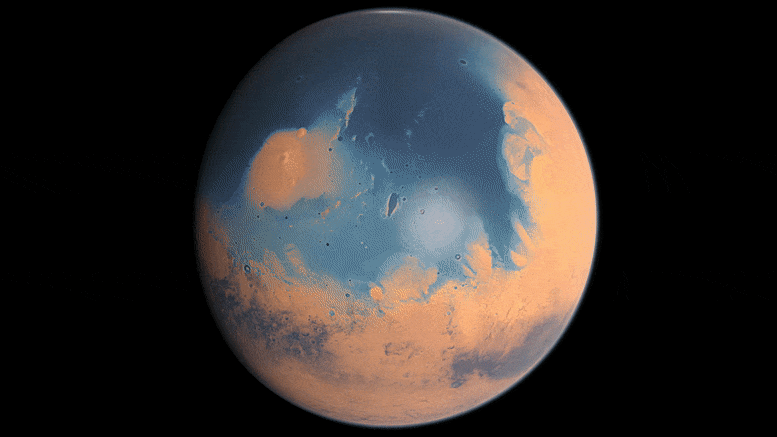Ancient Mars May Have Been Teeming With Life, Until It Drove Climate Change That

Researchers in the University of Arizona Department of Ecology and Evolutionary Biology simulated the conditions hypothetical lifeforms would have encountered on Mars 4 billion years ago, when liquid water was likely present in abundance on the red planet. Credit: ESO/M. Kornmess
Early in its history, the red planet would have likely been habitable to methanogens – microbes that make a living in extreme habitats on Earth – according to a study that simulated the conditions on a young
Mars is the fourth planet from the Sun – a dry, dusty, bitter-cold, desert world with a very thin atmosphere. While most scientists don’t expect to find living things currently thriving on Mars, it is much more plausible that life existed long ago. Back then Mars was warmer and covered with water, and therefore much more hospitable to life.
Today Mars is dry and extremely cold, with a tenuous atmosphere. It is therefore extremely unlikely to sustain any form of life at the surface. However, according to the study, 4 billion years ago, Earth’s smaller, red neighbor may have been much more hospitable. The study was published on October 10 in the journal Nature Astronomy.
Most Mars experts agree that the planet started out with an atmosphere that was much denser than it is today. Rich in carbon dioxide and hydrogen, it would have likely created a temperate climate that allowed water to flow and, possibly, microbial life to thrive, according to Regis Ferrière, a professor in the University of Arizona Department of Ecology and Evolutionary Biology and one of two senior authors on the paper.
The authors are not asserting that life existed on early Mars, but if it did, Ferrière said, “our study shows that underground, early Mars would very likely have been habitable to methanogenic microbes.”

This artist’s impression shows how Mars may have looked about four billion years ago. Credit: ESO/M. Kornmesser
Such methanogens, which make a living by converting chemical energy from their environment and releasing methane as a waste product, are known to exist in extreme habitats on Earth. For example, they are found near hydrothermal vents along fissures on the ocean floor. There, they support entire ecosystems adapted to crushing water pressures, total darkness, and near-freezing temperatures.
Using state-of-the-art models of Mars’ crust, atmosphere, and climate, coupled with an ecological model of a community of Earthlike microbes metabolizing carbon dioxide and hydrogen, the team of researchers team tested a hypothetical scenario of an emerging Martian ecosystem.
Methanogens are…
Read More: Ancient Mars May Have Been Teeming With Life, Until It Drove Climate Change That
